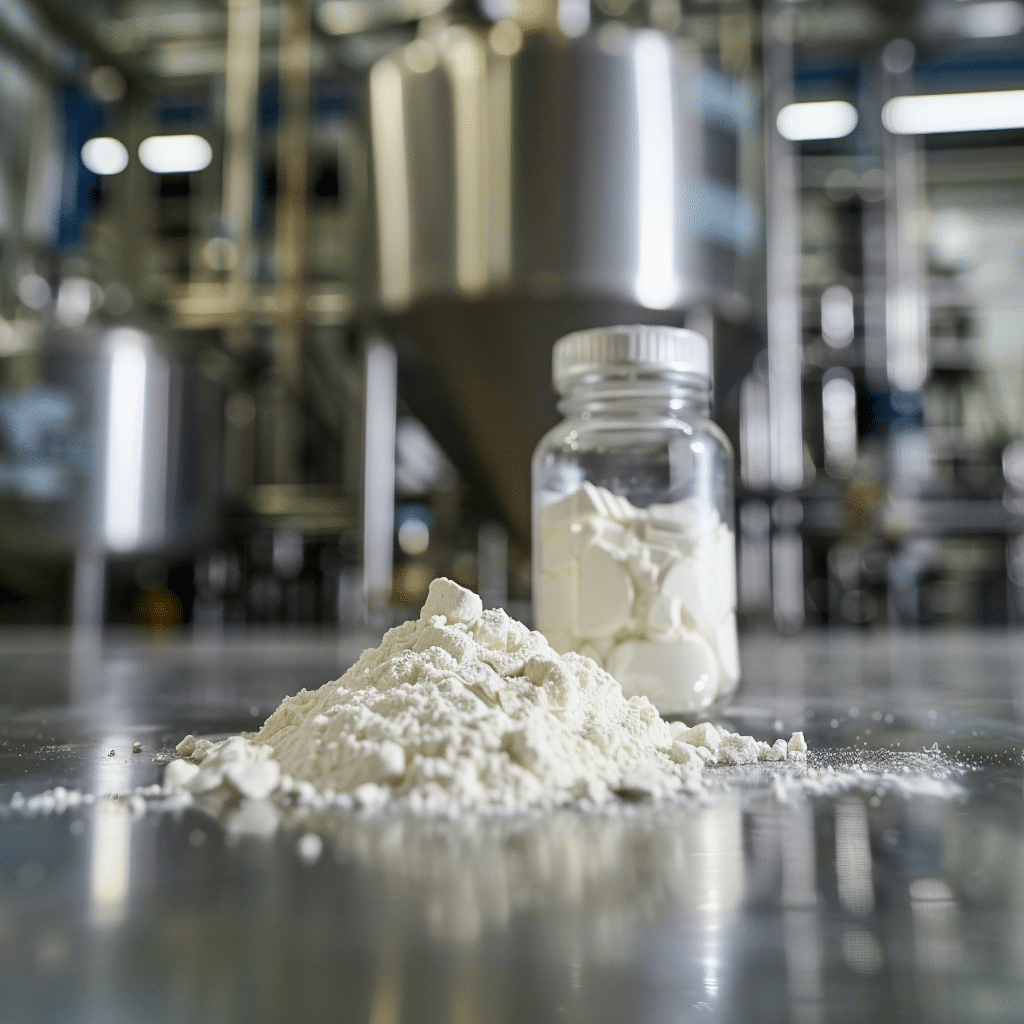Introduction: Why 2025 Is the Tipping Point for Longevity Science

The anti-aging supplement market is entering a new phase. With global aging accelerating and health-conscious consumers demanding results backed by science, 2025 is poised to be the year when next-generation longevity ingredients go mainstream. This article highlights six of the most important and well-studied ingredients expected to dominate in 2025. Whether you’re a product developer, health professional, or just curious about healthy aging, these compounds are the ones to watch.
1. NMN (Nicotinamide Mononucleotide): The NAD+ Catalyst
NMN supports cellular energy by increasing NAD+ levels, a coenzyme essential for metabolism and DNA repair. Research led by Harvard’s Dr. David Sinclair has fueled its popularity. NMN shows promise in improving insulin sensitivity, muscle performance, and even cognitive function.
- Key Mechanism: NAD+ biosynthesis
- 2025 Trend: Liposomal NMN for enhanced bioavailability
- Supporting Data: A double-blind, placebo-controlled study by Yoshino et al. (2021, Science) found that oral NMN (250 mg/day) for 10 weeks increased NAD+ biomarkers by 38% and improved muscle insulin sensitivity in prediabetic women.
[Source: https://pubmed.ncbi.nlm.nih.gov/34326235]
2. AKG (Alpha-Ketoglutarate): The Mitochondrial Metabolism Enhancer
AKG is a critical part of the Krebs cycle and supports both energy production and amino acid metabolism. Studies in mice have shown lifespan extensions of over 10%, and its benefits for muscle and bone density make it increasingly popular among older adults.
- Key Mechanism: Mitochondrial support & epigenetic modulation
- 2025 Trend: Calcium-AKG in wellness and sports nutrition
- Preclinical Data: A study published in Nature Communications (2020) found that supplementing calcium-AKG extended median lifespan in mice by up to 16%, while reducing age-related frailty.
[Source: https://www.nature.com/articles/s41467-020-19741-3]
3. PQQ (Pyrroloquinoline Quinone): The Mitochondrial Biogenesis Agent
PQQ promotes the creation of new mitochondria, enhancing cellular energy output and reducing fatigue. It’s often used in combination with CoQ10 for synergistic effects.
- Key Mechanism: Activation of PGC-1α
- 2025 Trend: Neuroprotective blends featuring PQQ + CoQ10
- Clinical Data: In a 12-week human trial, Nakano et al. (2012, Functional Foods in Health and Disease) showed that PQQ (20 mg/day) significantly reduced fatigue and improved sleep quality.
[Source: https://www.ffhdj.com/index.php/ffhd/article/view/30]
4. Urolithin A: The Muscle and Mitochondria Rejuvenator
A metabolite derived from pomegranate compounds, Urolithin A promotes mitophagy, a process that recycles damaged mitochondria. It’s gaining traction for its ability to improve muscle endurance and cellular function in older adults.
- Key Mechanism: Induction of mitophagy
- 2025 Trend: Direct supplementation over diet-derived conversion
- Clinical Data: A randomized controlled trial published in Cell Reports Medicine (2022) demonstrated that 500 mg/day of Urolithin A for 4 months significantly improved leg muscle endurance in sedentary older adults.
[Source: https://www.cell.com/cell-reports-medicine/fulltext/S2666-3791(22)00258-2]
5. Ergothioneine: The Mitochondrial Antioxidant with a Personal Transporter
Ergothioneine (ET) is a powerful antioxidant that accumulates in high-stress tissues such as the brain and liver. It’s transported by a unique protein (ETT/SLC22A4), and is being studied for its protective role in aging, neurodegeneration, and inflammation.
- Key Mechanism: Antioxidant protection at the mitochondrial level
- 2025 Trend: Fermentation-derived L-ergothioneine in clean-label formulas
- Scientific Insight: A 2010 review published in Biochemical Pharmacology highlights ET’s role in protecting mitochondrial DNA and delaying neurodegeneration. It is also GRAS-approved by the FDA.
[Source: https://pubmed.ncbi.nlm.nih.gov/20416331]
6. Spermidine: The Natural Autophagy Trigger
Spermidine stimulates autophagy, the body’s process of cellular renewal. Its intake has been linked to longer lifespan and reduced cognitive decline in epidemiological studies.
- Key Mechanism: Activation of autophagy pathways
- 2025 Trend: High-purity spermidine concentrates from wheat germ
- Research Highlight: A study from the International Journal of Epidemiology (2018) found that higher dietary intake of spermidine was associated with reduced all-cause mortality in a 20-year Austrian cohort.
[Source: https://pubmed.ncbi.nlm.nih.gov/29346649]
Conclusion: What This Means for Product Developers and Health-Conscious Consumers
In 2025, anti-aging will be less about “hope in a bottle” and more about scientifically validated mechanisms. Consumers are becoming more educated and demand ingredients with real clinical backing. Whether it’s NMN for NAD+ or spermidine for autophagy, formulating with these top-tier compounds will set brands apart and offer consumers meaningful benefits.
If you’re building or choosing longevity products, these six ingredients represent the future of anti-aging. Use them wisely, pair them strategically, and always look for purity, bioavailability, and data transparency.